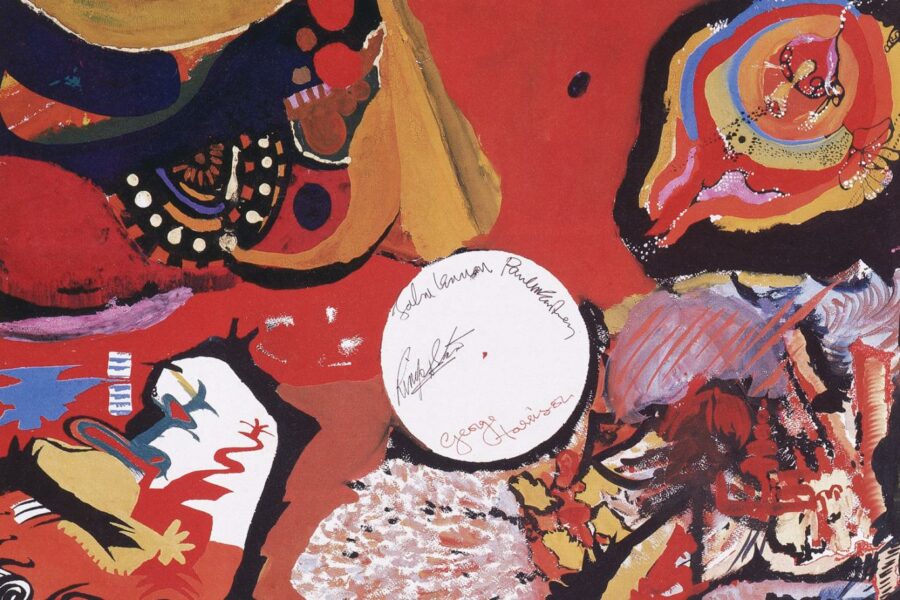Around the country today, along with a food-coma inducing serving of turkey, ham, stuffing and all the trimmings, a great many of you will be following another tradition: listening to Arlo Guthrie’s 1968 song “Alice’s Restaurant.” According to one YouTuber, when her kids were young, she’d “sit them down together and play this/torture them with it from beginning to end.” The replies suggest she’s not alone. Somewhere a child has now grown up and is passing the song down to a younger generation.
“Alice’s Restaurant” is about Thanksgiving in the same way that it’s about a restaurant owned by Alice–very little. Instead, it’s a long shaggy but true tale about Guthrie and his friend Rick Robbins helping their friends out after a Thanksgiving dinner that “couldn’t be beat”. With trash filling up the gutted former small-town Massachusetts church where Alice and her husband were living, the two fill up their VW van with the refuse and illegally dump it in the back woods. Guthrie gets arrested, taken to court, and fined for littering, only to have his new criminal record later disqualify him for the draft.
That’s the destination, but it’s the journey that makes the song, an 18-plus minute “talking blues” that Guthrie would have learned from his dad, folk legend Woody Guthrie. Woody in turn learned it from a 1920s country and Blues musician called Chris Bouchillon, who talked his way through songs because his singing voice wasn’t all that good. And the simple picking style Guthrie traces from Mississippi John Hurt to Pete Seeger and Ramblin’ Jack Elliot all the way back to the motherland: “In its infancy, that’s an African style approach to a six-string guitar and I have always loved it,” he told Rolling Stone.
Guthrie started writing the song, titling it “Alice’s Restaurant Massacree,” an esoteric word meaning a series of absurd events. He workshopped it in coffee houses and live venues, adding to it, taking bits out that weren’t working, playing with the time, from 18 minutes all the way up to 35. In February of 1967 Guthrie was invited to play live on New York City’s WBAI-FM. The recording became a hit, and helped the non-profit station fund-raise, broadcasting the song when a total dollar amount was hit. When the song got too much airplay, they also fund-raised to stop playing the song.
Then came the Newport Folk Festival, where the daytime crowd of 3,500 loved it so much that Guthrie returned for the evening set to play it to 9,500, joined on stage with a who’s‑who of folk legends including Pete Seeger and Oscar Brand. This was a big deal for an 18-year-old musician. The album came in October of that year, where the song took up a whole side. A movie adaptation appeared two years later, with the actual people from the song–including police chief William Obanhein (Officer Obie in the song) and the blind Judge James Hannon–playing themselves in the movie.
The song might not have its staying power if it wasn’t for its themes of resisting authority and bureaucracy, possibly even more than the anti-war message at its end.
“I’ve remained distrustful of authority for my entire life,” Guthrie told Smithsonian Magazine, “I believe it’s one of the great strengths of a democracy, that we take seriously our role as the ultimate authorities by our interest and our votes. Younger people have always had a rebellious streak. It goes with the territory of growing up.”
Guthrie retired from touring, and had retired the song even earlier than that. But it lives on every Thanksgiving in many households. As he told Rolling Stone, that’s a fine legacy:
“Hey if they’re gonna play one song of yours on the radio one day a year, it might as well be the longest one you wrote!”
Related Content:
Hear Two Legends, Lead Belly & Woody Guthrie, Performing on the Same Radio Show (1940)
William S. Burroughs Reads His Sarcastic “Thanksgiving Prayer” in a 1988 Film By Gus Van Sant
F. Scott Fitzgerald’s 13 Tips for What to Do with Your Leftover Thanksgiving Turkey
Ted Mills is a freelance writer on the arts who currently hosts the Notes from the Shed podcast and is the producer of KCRW’s Curious Coast. You can also follow him on Twitter at @tedmills, and/or watch his films here.





